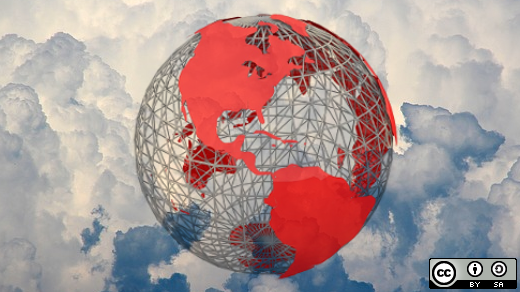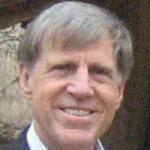Global climate change affects us all. It is, at its heart, an energy issue—a problem too large and too complex for any single person, company, university, research institute, science laboratory, nuclear trade association, or government to address alone. It will require a truly global, cooperative effort, one aimed at continued innovation across a range of technologies: renewables, batteries, carbon capture, nuclear power development, and more.
Throughout the past year, I've been part of an initiative working on nuclear power decommissioning in Japan. As part of that work—which includes several meetings every month on this issue, as well as my own independent research on the subject—I've learned more about the ways various communities can play a role in understanding and impacting energy needs and climate discussions.
In this article, I'll offer one example that illustrates how this is the case—that of "Generation IV" nuclear power plant development. This example demonstrates how open organization principles can influence future discussions about our global energy and climate change challenges. We must address these challenges with an open mindset.
Community purposes and frameworks
Members of a community must believe in a common purpose. That sense of common purpose is not only what unites an open project but also what helps an open, distributed group maintain its focus and measure its success. Clear, public, and mutually agreed-upon statements of purpose are a basic feature of open organizations.
So an open approach to global energy and climate change challenges should do the same. For example, when researching Generation IV nuclear power plant development, I've learned of a basic framework for task force goals:
- There should be a desire to reduce current carbon dioxide (CO2) emissions and greenhouse gases.
- There should be a desire to reduce nuclear waste.
- There should be a desire to provide stable, low-cost electricity without increasing CO2 emissions globally, particularly in rural areas and developing countries where most of the future CO2 emissions will come from in the future.
- There should be a desire to improve safety in nuclear power energy production. This should include developing a nuclear fuel that cannot be converted to weapons, reducing the chance of nuclear weapon confrontation or terrorist attacks.
- There should be a desire to reduce global air, water, and land pollution.
A successful open approach to these issues must begin by uniting a community around a common set of goals like these.
Building community: inclusivity and collaboration
Once a community has clarified its motivations, desires, and goals, how does it attract people who share those desires?
One method is by developing associations and having global conferences. For example, the Generation IV International Forum (GIF) was formed to address some of the desires I listed above. Members represent countries like Argentina, Brazil, Canada, China, EU, France, Japan, S. Korea, South Africa, Switzerland, UK, USA, Australia, and Russia. They have symposia to allow countries to exchange information, build communities, and expand inclusivity. In 2018, the group held its fourth symposium in Paris.
But in-person meetings aren't the only way to build community. Universities are working to build distributed, global communities focused on energy and climate challenges. MIT, for instance, is doing this with its own energy initiative, which includes the "Center for Advanced Nuclear Energy Systems." The center's website facilitates discussions between like-minded advocates for energy solutions—a beautiful example of collaboration in action. Likewise, Abilene Christian University features a department in future nuclear power. That department collaborates with nuclear development institutes and works to inspire the next generation of nuclear scientists, which they hope will lead to:
- raising people out of poverty worldwide through inexpensive, clean, safe and available energy,
- developing systems that provide clean water supply, and
- curing cancer.
Those are goals worth collaborating on.
Community and passionate, purposeful participation
As we know from studying open organizations, the more specific a community's goals, the more successful it will likely be. This is especially true when working with passionate communities, as keeping those communities focused ensures they're channeling their energy in appropriate, helpful directions.
Global attempts to solve energy and climate problems should consider this. Once again in the case of Generation IV nuclear power, there is growing interest in one type of nuclear power plant concept, the Molten-salt reactor (MSR), which uses thorium in nuclear fuel. Proponents of MSR hope to create a safer type of fuel, so they've started their own association, the Thorium Energy World, to advocate their cause. This conference centers on the use of thorium in the fuel of these type nuclear power plants. Experts meet to discuss their concepts and progress on MSR technology.
But it's also true that communities are much more likely to invest in the ideas that they specify—not necessarily those "handed down" from leadership. Whenever possible, communities focused on energy and climate change challenges should take their cues from members.
Recall the Generation IV International Forum (GIF), which I mentioned above. That organization ran into a problem: too many competing concepts for next-generation nuclear power solutions. Rather than simply select one and demand that all members support it, the GIF created general categories and let participants select the concepts they favored from each. This resulted in a list of six concepts for future nuclear power plant development—one of which was MSR technology.
Narrowing the community's focus on a smaller set of options should help that community have more detailed and productive technical discussions. But on top of that, letting the community itself select the parameters of its discussions should greatly increase its chances of success.
Community and transparency
Once a community has formed, questions of transparency and collaboration often arise. How well will members interact, communicate, and work with each other?
I've seen these issues firsthand while working with overseas distributors of the products I want them to sell for me. Why should they buy, stock, promote, advertise, and exhibit the products if at any time I could just cut them out and start selling to their competitors?
Taking an open approach to building communities often involves making the communities' rules, responsibilities and norms explicit and transparent. To solve my own problem with distributors, for instance, I entered into distributor agreements with them. These detailed both my responsibilities and theirs. With that clear agreement in-hand, we could actively and collaboratively promote the product.
The Generation IV International Forum (GIF) faced a similar challenge with it member countries, specifically with regard to intellectual property. Each country knew it would be creating significant (and likely very valuable) intellectual property as part of its work exploring the six types of nuclear power. To ensure that knowledge sharing occurred effectively and amicably between the members, the group established guidelines for exchanging knowledge and research findings. It also granted a steering committee the authority to dismiss potential members who weren't operating according to the same standards of transparency and collaboration (less they become a burden on the growing community).
They formed three types of agreements: "Framework Agreements" (in both French and English), System Arrangements (for each of the six systems I mentioned), and Memoranda of Understanding (MOU). With those agreements, the members could be more transparent, be more collaborative, and form more productive communities.
Growing demand—for energy and openness
Increasing demand for electrical power in developing countries will impact global energy needs and climate change. The need for electricity and clean water for both health and agriculture will continue to grow. And the way we address both those needs and that growth will determine how we meet next-generation energy and climate challenges. Adopting technologies like Generation IV nuclear power (and MSR) could help—but doing so will require a global, community-driven effort. An approach based on open organization principles will help us solve climate problems faster.






8 Comments